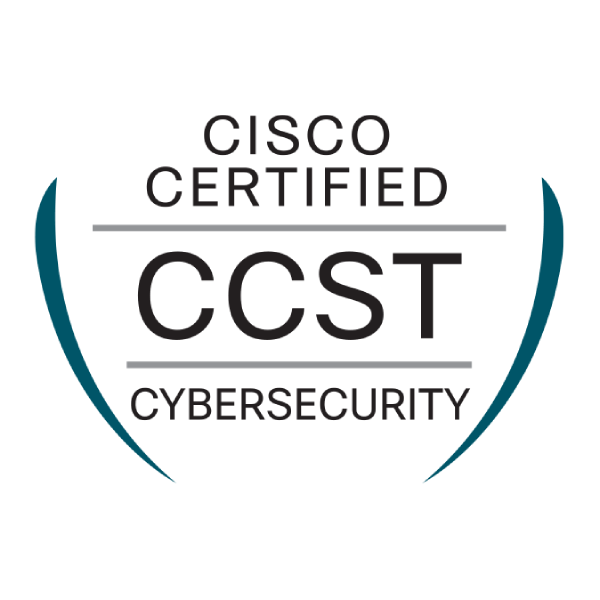




Include these certifications on your CV and LinkedIn profile.
Theoretical-practical training with a cyberattack simulation system.
2 months. Modality: teletraining.
Totally free.
Engineers and Graduates in Industrial Technical Engineering and related fields.
University students of this branch and other related ones.
Contents:
INTRODUCTION TO CYBERSECURITY – 36 hours
What are you going to learn in this module?
Knowledge of cybersecurity fundamentals.
Role of people.
Type of threats and relevant actors in Cybercrime.
Risk Management Methodology.
Scope, Critical assets, Identification and assessment of business risks.
Threats and safeguards.
Business Continuity.
Risk management cycle.
Governance Models and Information Classification.
Standards and regulation.
Incident Management.
Hardening: Software, Hardware and Networks.
OSI levels (Open System Interconnection Model).
TCP/IP model: DNS, FTP, IMAP, TCP, IPv4, IPv6, HTTP protocols.
Encapsulated.
Network Security Components.
INTRODUCTION TO THE INDUSTRIAL FUNDAMENTALS OF OPERATION TECHNOLOGIES – 36 hours
What are you going to learn in this module?
Introduction to the essential aspects of the industry.
Recognition of the fundamentals of industrial process control.
P.I.D.
RTU
HMI
PLC
SCADA
DCS
Implementation of industrial instrumentation.
Identification of industrial communications systems.
ETHERCAT.
Integrated production systems.
Implementation of advanced manufacturing systems.
Approach to Industry X.0.
INTRODUCTION TO ADVANCED INDUSTRIAL CYBERSECURITY – 24 hours
What are you going to learn in this module?
Identification of ICS/SCADA components.
Description of industrial networks and protocols.
Recognition of industrial threats and vulnerabilities.
Definition of standards and knowledge of best industrial cybersecurity practices.
BASIC AND ADVANCED CYBER EXERCISES OF INDUSTRIAL CYBERSECURITY – 24 hours
What are you going to learn in this module?
Identification of ICS vulnerabilities.
Simulation of attacks on OT Industrial Networks through Cyber Range.
Identification and implementation of DDOS Attacks.
Evaluation of OT/IT Ransonware scenarios.
Secure design of industrial networks with digital twin.
Application of industrial network security tools.
CISCO CERTIFIED SUPPORT TECHNICIAN (CCST) CYBERSECURITY – 120 Hrs
What are you going to learn in this module?
1.1. Define essential security principles.
1.2. Explain common threats and vulnerabilities.
1.3. Explain the principles of access management.
1.4. Explain encryption methods and applications
2.1. Describe vulnerabilities in the TCP/IP protocol.
2.2. Explain how network addresses affect network security.
23. Describe network infrastructure and technologies.
2.4. Set up a secure wireless SoHo network.
2.5. Implement secure access technologies.
3.1. Describe operating system security concepts.
3.2. Demonstrate familiarity with appropriate endpoint tools that collect security assessment information.
3.3. Verify that endpoint systems comply with security policies and standards.
3.4. Implement software and hardware updates.
3.5. Interpret system logs.
3.6. Demonstrate familiarity with malware removal.
4.1. Explain vulnerability management.
4.2. Use threat intelligence techniques to identify potential network vulnerabilities.
4.3. Explain risk management.
4.4. Explain the importance of disaster recovery and business continuity planning.
5.1. Monitor security events and know when escalation is necessary.
5.2. Explain computer forensics processes and attack attribution.
5.3. Explain the impact of compliance frameworks on security incident handling.
5.4. Describe the elements of cybersecurity incident response.
Once you complete the training, you will achieve certifications that will set you apart from other professionals and prove that you have the crucial practical skills to assess and manage risks, implement security measures in systems and networks, and respond effectively to security incidents.

Badge issued by Cisco – Introduction to Cybersecurity”

Information Technology Specialist Cybersecurity Certification.

Cisco Certified Support Technician (CCST) Professional Certification
Qualifications
Complete this training and get 4 accreditations!
CISCO Badge: 'Introduction to Cybersecurity'.
Degree “Advanced cybersecurity in operation technology environments, corresponding to the training specialty IFCT0050.
Two professional certifications, Information Technology Specialist Cybersecurity Certification and Cisco Certified Support Technician Cybersecurity (CCST), for passing module 5, which is optional.
The training begins in the next 15 days and lasts 7 weeks.
No, neither the training nor the issuance of the title, badge or certification have any type of cost for the students.
Approximately 17 a week with flexible hours, you decide when to complete the content on the platform. Additionally, masterclasses will be given and group tutorials will be held, which you can attend live or view the recording. There will be a learning control at the end of each module.
– Be employed, self-employed, civil servant or be a job seeker.
– Have a high school academic level or higher.
– Commitment to dedicate enough time to take advantage of the training, which could be up to 20 hours per week for 2 months.
Yes. When you complete the first 4 modules you will receive the CISCO 'Introduction to Cybersecurity' credential and the 'Advanced Cybersecurity in Operational Technology Environments' qualification. Subsequently, if you wish to obtain the CISCO CCST certification and the IT Specialist Cybersecurity certification, you will have an additional 2 months to complete module 5.
If you need support to complete your registration, write to cybersecuritycourse@grupomainjobs.com by phone at 951 23 98 42 either 951 20 70 28 or by WhatsApp at o 657 096 465